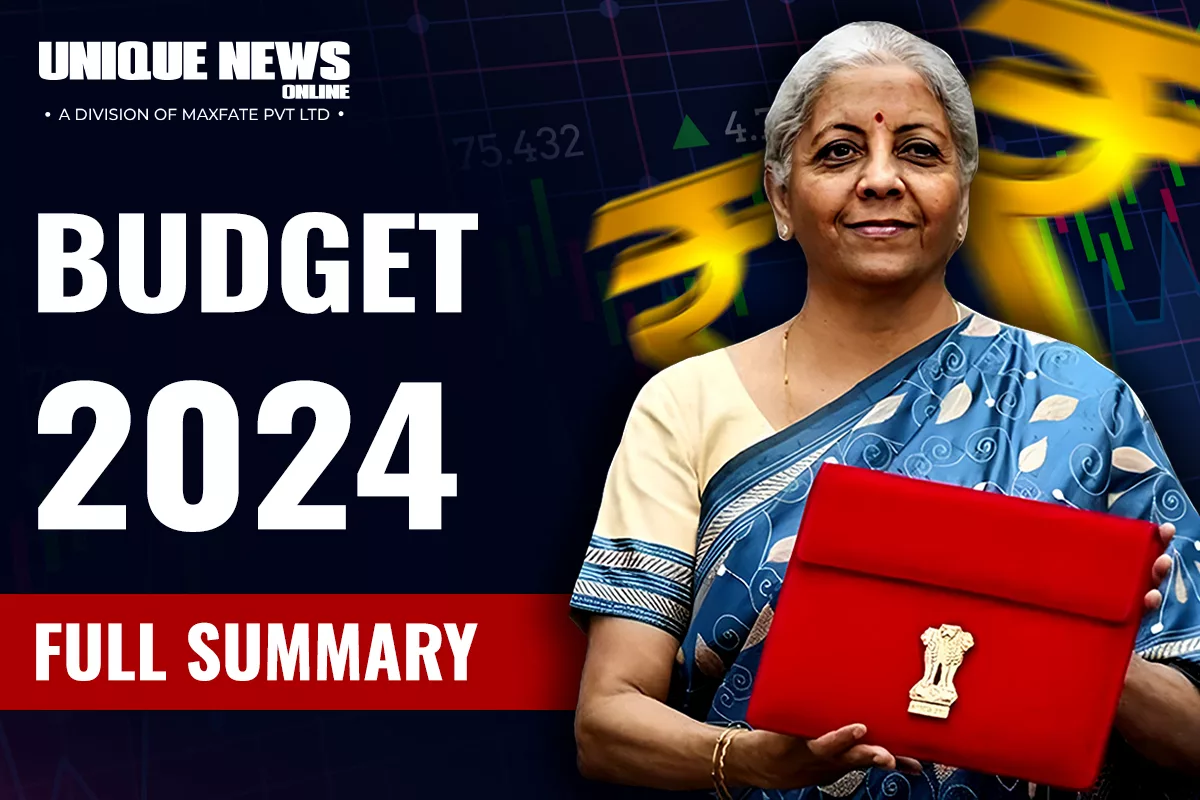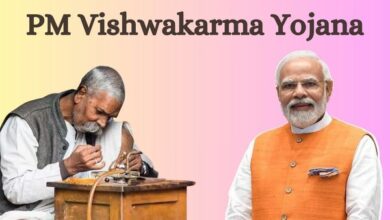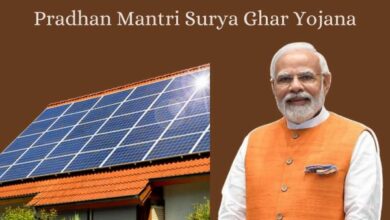Finance Minister Nirmala Sitharaman has presented the interim budget for 2024-25 for the sixth consecutive year, becoming the first woman and the second person to do so after Morarji Desai. She has presented five annual budgets and one interim budget. The Union budget is the annual financial statement of a country that shows the total amount of the government’s income and expenditure in a specific financial year.
The interim budget has been accessed in a “paperless form” on the Union Budget Mobile Application, available in both English and Hindi. The current Union budget or annual financial statement will be interim, as India is going to witness general elections in April-May 2024. Thus, the full budget will be presented in July 2024 by the new or re-elected government.
10 Basic Takeaways From Interim Budget 2024-25
- Nominal GDP: 10.5%, Rs 3,27,71,808 crore GDP
- Fiscal Deficit: 5.8% (FY24), 5.1% (FY25), 4.5% (FY26)
- Gross Government Borrowing: 14.1 lakh crore
- Capital Expenditure: 9.5 lakh crore Revised Estimate(FY24), 10 lakh crore, Budgetary estimate (FY24), 11.11 lakh crore (FY25) (11.11%).
- Withdrawal of Outstanding Tax Demand up to Rs 10,000 for FY 2010-11 to FY 2014-15 and up to Rs 25,000 till FY 2009-10. Tax exemptions have also been extended to start-ups till March 31, 2025.
- 2 Crore more “pakke” houses to be constructed under the government’s flagship scheme, Pradhan Mantri Awas Yojana Gramin (PMAY-G).
- Three major economic railway corridors will be constructed in the country, focusing on four areas including high traffic density corridors, port connectivity corridors, mineral and cement corridors, and energy.
- Narendra Modi declared on August 15, 2023, to convert women self-help groups (WSHG) to 2 Cr Lakhpati Didis. The same aim has been increased to make Lakhpati Didis to 3 crore.
- India aims to make 400 Vande Bharat trains, hence 40,000 rail bogies are to be converted to the standard of Vande Bharat trains.
- Free cervical cancer vaccines will be provided to girls from 9 to 14 years of age.
- Nirmala Sitharaman, in her speech, used some new words like FDI or ‘First Develop India,’ in which she mentioned that from 2014 to 2023, FDI investment in India has reached USD 596 Billion.
- The Finance Minister also referred to GDP as ‘Governance Development Performance’ and mentioned India’s Nominal GDP will be 10.5%. She mentioned GYAN as ‘Gareeb (Poor), Youth, Annadata (Farmer), and Nari (Woman).
- The 4 Fs: after the COVID-19 pandemic, four Fs are under the focus areas that include food, fertilizer, fuel, and finances.
Exploring the Interim Budget In-Depth
The title of this year’s budget has been regarded as “Viksit Bharat by 2047,” and its vision is, “Prosperous Bharat in harmony with nature, modern infrastructure, and opportunities for all.” As per the Interim Budget, development will be done in two phases,
- Sabka Saath Sabka Vikas, which relates to the Comprehensive Development of all.
- Sabka saath, sabka vikas, sab ka vishwas, which relates to the Trinity of demography, democracy, and diversity backed by ‘sab ka prayas.’
Focus Areas (1/2)
Garib Kalyan, Desh ka Kalyan
- From Direct Benefit Transfer (DBT), India made savings of ₹2.7 lakh crore.
- 25 Cr people moved out of the Multidimensional poverty index. The percentage decreased from 29.17% in 2013-14 to 11.28% in 2022-23. Moreover, 24.82 Cr people moved out of multidimensional poverty in 9 years, with the maximum decline witnessed in Uttar Pradesh, Bihar, and Madhya Pradesh.
- 78 lakh street vendors, beneficiaries of the PM-SVANidhi scheme, were given credit assistance. 2.3 Lakh street vendors have also received credit for the third time.
Empowering the Youth
- 1.4 cr youth and youngsters have been given skill training under the Skill India Mission.
- Under PM Mudra Yojana, 43 crore loans amounting to Rs 22.5 lakh crore have been sanctioned to women, people belonging to SC, and ST to foster their entrepreneurial aspirations.
- The budget allocation to the PM-SHRI scheme has been increased from 4000 Crore in 2023-24 to 6050 Crore in 2024-25.
- The increase of IITs has been witnessed from 16 in 2014 to 23 in 2023, and AIIMs increased from 7 in 2014 to 22 in 2022.
Focus areas (2/2)
Welfare of Farmers- Annadata
- Rs 6000 has been disbursed to 11.8 cr farmers under PM-KISAN yojana.
- Under PM Fasal Bima Yojana, 4 crore farmers have been provided with crop insurance.
- 1361 mandis have been integrated under the e-NAM portal of the government, supporting a trading volume of ₹3 lakh crore.
- The government has purchased 39 metric tons of Rice and 262 metric tons of wheat at MSP from farmers.
Nari Shakti
- Women entrepreneurs received 30 crore Mudra Yojana loans.
- In ten years the enrolment of female students has increased by 28 percent.
- 43% of females enrolled in STEM (Science, Technology, Engineering and Management) courses.
- 1 crore women were assisted in becoming Lakhpati Didis by 83 Lakh SHGs.
- The increase in female labor force participation has also increased from 23.3% in 2017-18 to 37% in 2022-23.
Strategy for Amrit Kaal (1/5): Sustainable Development
Commitment to meet ‘Net Zero’ by 2070
- For wind energy, Viability gap funding has been launched. Coal liquefaction and gasification capacity will be set up. Compressed biogas, PNG, and CNG will be included under phased mandatory blending by 2025-26 (optional until FY 2024-25).
Rooftop Solarization and Green Energy
- 1 crore households will be provided with up to 300 units of free electricity per month. e-Buses will be adopted for public transport networks. By supporting manufacturing and charging, the e-vehicle ecosystem will be strengthened. A new scheme will also be launched for biomanufacturing and bio-friendly to support
Strategy for Amrit Kaal (2/5): Infrastructure and Investment
- Implementation of three major railway corridor programs to improve logistics efficiency and reduce cost under the PM Gati Shakti scheme.
- Foreign investment has been promoted via bilateral investment treaty negotiation.
- Comprehensive development of new airports and expansion of existing airports are to be done under the UDAN scheme. Increase in number of airports from 74 in FY15 to 149 in FY22.
- Urban transformation to be promoted via Metro Rail and NaMo Bharat.
Strategy for Amrit Kaal (3/5)
Inclusive Development (1/2)
Aspirational District Programme
Currently, in India, there are 112 districts that are economically backward, where government schemes and facilities do not effectively reach. Therefore, these districts are emphasized in the Aspirational Districts program. The percentage of women registered for Anti-Natal care within the first trimester has increased from 68% in 2018 to 89% in October 2023. Similarly, the number of enrollments under Pradhan Mantri Jeevan Jyoti Bima Yojana per lakh population has increased from 1737 in 2018 to 13195 in October 2023.
Health
Free cervical cancer vaccines will be provided to girls aged 9 to 14 years. For improved nutrition delivery, development, and early childhood care, Saksham Aanganwadi and Poshan 2.0 will be expedited. The U-WIN platform for immunization will be launched under Mission Indradhanush. Health coverage under the Ayushman Bharat scheme will be extended to all Anganwadi, ASHA workers, and helpers.
Inclusive Development (2/2)
Housing: The budget of PMAY (Pradhan Mantri Awas Yojana) has been increased from Rs 79590 crore in 2023-24 to Rs 80671 crore in 2024-25. Two crore more “pakke” houses will be constructed under PMAY-G in the next 5 years. A housing scheme for the middle class will also be launched to encourage them to buy/build their own houses.
Strategy for Amrit Kaal (4/5): Tourism
States will be encouraged to develop iconic tourist places to provide opportunities for local entrepreneurship and attract businesses. Interest-free loans will be provided to the states for this purpose. In 60 iconic places, G20 meetings were held to showcase the diversity of India. Projects will be undertaken for port connectivity, tourism amenities, and infrastructure.
Strategy for Amrit Kaal (5/5)
Agriculture and Food Processing
Private and public investment will be promoted in post-harvest activities. In all agro-climatic zones, the Nano-DAP application will be expanded. To achieve self-reliance in oilseeds, an Atmanirbhar Oilseeds Abhiyaan strategy will be formulated. Dairy development will be carried out through a comprehensive program. The Pradhan Mantri Matsaya Sampada Yojana will be implemented to double exports, enhance aquaculture productivity, and generate more employment opportunities. Moreover, 5 Integrated Aquaparks will also be set up.
Focus on Sea Trade
In 2023-24, the budgetary allocation for the Blue Revolution was Rs 2025 crore, which has been increased to Rs 2352 crore in 2024-25.
Achievements of Taxation Reforms
In the last 10 years, Direct Tax Collections have tripled. The number of people filing returns has surged to 2.4 times. Faster refunds have been initiated, reducing the time from 93 days in 2013-14 to only 10 days in 2023-24.
Retention of Same Rax Rates
Corporate taxes remain the same: 22% for existing domestic companies and 15% for certain new manufacturing companies. As per the New Income Tax Slab, there will be no tax liability for people with an annual income up to ₹7 lakh.
Also Read:

 PM Vishwakarma Yojana 2024: How to Apply Online; STEP-BY-STEP Guide
PM Vishwakarma Yojana 2024: How to Apply Online; STEP-BY-STEP Guide David Copperfield Net Worth 2024: How Much is the Novel by Charles Dickens Worth?
David Copperfield Net Worth 2024: How Much is the Novel by Charles Dickens Worth? Noel Biderman Net Worth 2024: How Much is the Canadian Internet entrepreneur and business professional Worth?
Noel Biderman Net Worth 2024: How Much is the Canadian Internet entrepreneur and business professional Worth? Pradhan Mantri Surya Ghar Yojana 2024: Scheme Details, Eligibility, Subsidy and How To Apply Online?
Pradhan Mantri Surya Ghar Yojana 2024: Scheme Details, Eligibility, Subsidy and How To Apply Online? BJP Youth Wing President Tejasvi Surya Nominated His Second-In-Command, Abhinav Prakash For A Debate With Rahul Gandhi
BJP Youth Wing President Tejasvi Surya Nominated His Second-In-Command, Abhinav Prakash For A Debate With Rahul Gandhi Kenya Finance Bill: Vehicle Owners To Bear The Brunt, Will Have To Pay Annual Tax Of Up To Ksh 100,000
Kenya Finance Bill: Vehicle Owners To Bear The Brunt, Will Have To Pay Annual Tax Of Up To Ksh 100,000 Adam Selipsky Net Worth 2024: How Much is the CEO of Amazon Web Services, Inc. Worth?
Adam Selipsky Net Worth 2024: How Much is the CEO of Amazon Web Services, Inc. Worth? Ken Langone Net Worth 2024: How Much is the American Businessman Worth?
Ken Langone Net Worth 2024: How Much is the American Businessman Worth?